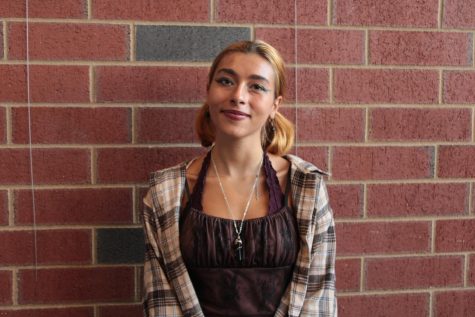SCASD Confronts the Question of Diversity
A pie chart representing federal data from the Institute of Education Sciences finding that 79.3% of teachers in US public schools were white in 2020.
November 30, 2021
The majority of teachers in America are white women. Walking into any average public school in the US, including State High, is enough to make this clear. In 2020, 76.5% of educators were female, and nearly 80% were white. Pennsylvania public schools in particular are home to some of the least racially diverse staff in the nation.
When Dr. Seria Chatters, Director of Equity and Inclusivity at SCASD, first entered the district in 2018, there were eight employees of color. Eight employees of color within the entire district, including those outside of teaching roles who never stepped foot in classrooms. As of the 2021 school year, that number is now 24. While a three-fold increase is certainly a step in the right direction, it seems hard to fathom that such a small percentage should exist in such a vast district. Although State College, and Centre County especially, is a predominantly white area, the percentage of students of color far outweighs the teachers they see every day at school. This begs the question: Why? Why are there so few of them?
One commonly repeated argument for why so many schools lack POC teachers is that they simply don’t want to live and teach here, something out of anyone’s control.
“That is an actual common myth,” Chatters said. “When we think about it, we have an actual large percentage of our teachers in SCASD that attended State High. They graduate from here and go on to Penn State and then they come back and they work here. So in reality, if we held those same expectations for our students of color as well, we should see a good reflection of students who want to go into education going to Penn State and then coming back.”
The reason why this theory fails to reflect the reality of staff makeup can be attributed to many different factors, some of which are impossible to measure with a number or eradicate with a policy. For example, if the high school experience for students of color in their hometown was not a good one, they are much less likely to return and teach. Some students graduating from State High may not ever see themselves coming back.
“If we make high school a better place for all students to be, and in particular students of color, students with disabilities, then we have a higher likelihood of being able to hire them back,” Chatters said.
Part of her job description is doing just that; providing equitable opportunities to produce equal outcomes. Equal outcomes means closing the racial gap in graduation rates, equal participation in extracurriculars, diversifying AP classes, and more. Essentially, the hiring process starts long before it’s time to apply.
Besides hiring new faces from the outside, another key way that schools can increase staff diversity is hiring from within. In SCASD, as within many other school districts, there is a far higher percentage of POC paraprofessionals working on support teams than teachers. Better pathways must be provided for paraprofessionals who are interested in becoming teachers to be able to get into the teaching field in order to hire from within. Since those individuals have demonstrated that they like working in SCASD and already live in State College, they create promising prospects for filling a new role. Often, lack of easy and accessible pathways into becoming a teacher is one of the main barriers that potential applicants face.
“We have a number of people that live in the community, but sometimes navigating the Pennsylvania teacher certification process is difficult, and if you’re by yourself doing it, it could be even more difficult,” Chatters said.
State High is currently working to partner with outside groups, as well as the Race and Marginalized Populations workgroup within the district. A subcommittee of parents at the Easterly Parkway PTSO are also looking to form a group to mentor individuals of color or individuals with disabilities who need a mentor to help them navigate the certification process.
However, the hiring process itself has become one of the main focuses for improvement for State High in the past few years. Streamlining the process to be the same across schools in the district is an important step to eliminating interview bias, including “group-think,” which Chatters believes must be removed from the process. After an interview takes place, two interviewers often discuss their opinions of the candidate together, and then record their observations afterward. The problem with this practice is that one person may think one way about a candidate, but by the time their partner talks to them, they’re able to convince them to change their opinions. By shifting to individual, anonymous evaluations of applicants, everyone’s perspective can be heard without bias spreading around.
Once a teacher is through the door, the work doesn’t stop there. With only 24 faculty members of color in a district with close to 650 teachers, how often are those faculty even going to see each other? How often will they have a peer? Even after the district puts in substantial work to hire more and more people, if they don’t feel accepted or connected here, they stay for a year and then leave. Both Chatters and the former principal of State High, Curtis Johnson, have both been working to combat this issue by establishing a mentoring program for diverse employees so that they can connect them with each other. The group will be meeting once a month and supporting staff while they’re at State High.
The efforts being put into changing these problems are for good reason; the detriments of not having POC representation in school staff come in many forms.
“All students lose out when we don’t have a diverse teacher workforce. And I wanna be really key on the fact that white students lose out as well. When they are not seeing diverse representations of people that they can learn from, connect with, and are able to form these great relationships with, they miss out,” Chatters said. “But, the reason why Black students, Latinx students, Asian students, and students with disabilities miss out most is because they are not getting to see themselves reflected back in these wonderful individuals. We know every human being can probably think back to a teacher that they connected with, that was special to them, that made them feel special. And sometimes, there were some parts of that teacher that you may have felt you can connect with. So, for our students from many diverse backgrounds, when they never ever get those experiences, it causes a significant gap in their life to not see themselves reflected.”
Students who have never seen anyone similar to them in a teaching role will have a harder time picturing themselves sitting behind that desk. These gaps that are created only stretch wider and wider as kids get older, and feel more and more as if it’s too late, and being a teacher is just something that wouldn’t make sense.
It’s also important to recognize that POC teachers in school shouldn’t be confined to their identity. While a Latina woman teaching Spanish or a Middle Eastern man teaching Arabic is not a bad thing, people of color have skills beyond teaching their language or culture. To respect that people of color and individuals with disabilities hold value across the education system allows for students to be able to be excited and have an opportunity to connect with teachers of all backgrounds.
With all of this in mind, keeping the status quo in high schools everywhere, including State High, is simply no longer an option.
“You’re going to get back exactly the amount of effort you’ve been putting in. Doctor Bob O’Donnell, our superintendent, he’s laser-focused on this issue because he’s always laser-focused on doing what’s best for kids and we recognize what research says. More diverse teachers really do help with overall student outcomes,” Chatters said.
This year, Chatters is tremendously proud of the district for putting in a great amount of effort to bring in a more diverse staff which has helped identify the changes that must be made within the educational system. With the responsibility for the wellbeing of almost a thousand students in their hands, it is imperative to her that the small victories SCASD has made in past years continue to grow and create a snowball effect of change.


